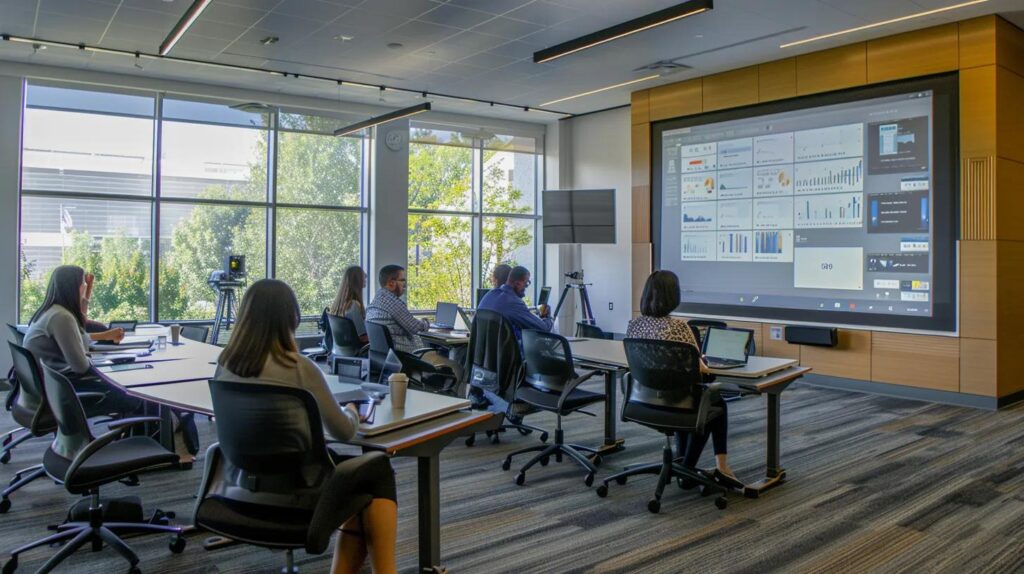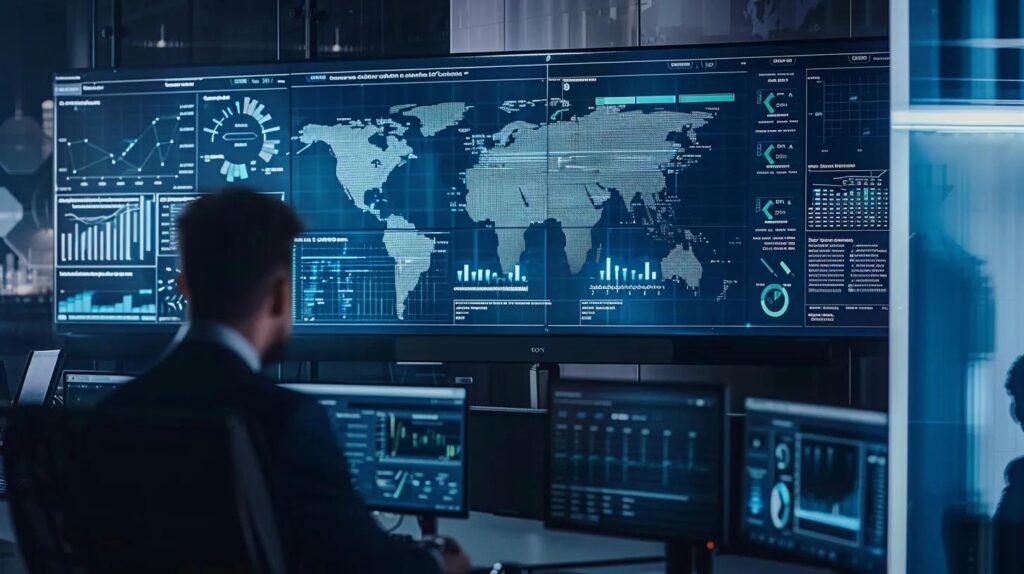ISO 27001's Role in Strengthening Supplier Security Management

How ISO 27001 Enhances Supplier Security Management
ISO 27001 is the international standard for information security management that is crucial for modern organizations. This article provides complete information on how ISO 27001 drives supplier security management and improves supply chain resilience. It explains the critical elements, practical approaches, and real-world examples that show how ISO 27001 enhances supplier security, reduces risks, and improves compliance.
ISO 27001 Supplier Security: Key Takeaways
- ISO 27001 standardizes risk management across supplier relationships.
- Core elements like risk assessment and continuous monitoring enhance compliance.
- Embedding ISO 27001 into operations drives measurable improvements.
- Real-world examples validate its effectiveness in supplier security.
- Adoption of best practices boosts overall supply chain resilience.
1. How Does ISO 27001 Define Supplier Security Management?

ISO 27001 defines supplier security management (ISO 27001 supplier management) by establishing a systematic framework to identify, assess, and mitigate risks associated with supplier relationships. This standard requires clear contractual agreements, security policies, and regular assessments of third-party vendors (iso 27001 certification companies). For example, companies have reported up to a 30% reduction in security incidents when ISO 27001 processes are rigorously applied, according to research published by the International Organization for Standardization in 2021.
The framework encourages organizations to collaborate with suppliers to ensure that the entire supply chain complies with established security protocols. This cooperation enhances transparency and accountability, leading to improved data integrity and reduced confidentiality breaches.
Efficient supplier security management is achieved through documented requirements that guide everything from hardware procurement to ongoing service agreements, ensuring every subcontractor meets a unified standard.
Why can security incidents endanger the supply chain?
Security incidents pose a significant threat to supply chains, primarily due to their interconnected nature. In today’s global economy, supply chains often involve multiple stakeholders—including suppliers, manufacturers, distributors, and retailers—each relying heavily on shared information systems. When a security breach occurs, such as a data theft, system compromise or ransomware attack, it does not impact just one entity but can ripple through the entire chain. For instance, if a supplier’s data is compromised, it may lead to the tampering of inventory records, resulting in inaccurate stock levels, delayed shipments, and ultimately, loss of customer trust. The repercussions of such incidents can be prolonged, requiring time-consuming investigations and recovery processes that disrupt operational continuity across multiple businesses.
Additionally, security incidents can erode the resilience and agility of a supply chain. In an environment where speed and efficiency are crucial, any disruption can hinder an organisation’s ability to respond swiftly to market demands. The fallout from a cyber-attack could mean not just financial losses, but also damage to brand reputation and customer loyalty. Companies may find themselves under heightened scrutiny from regulators and stakeholders, leading to additional costs and operational burdens. Thus, the interdependence of modern supply chains underscores the critical importance of robust security measures, as vulnerabilities in one part can jeopardise the entire network, highlighting the need for comprehensive risk management strategies to safeguard against potential threats.
Should service agreements address information security risks?
In today’s digital landscape, where data breaches and cyber threats have become increasingly prevalent, addressing information security risks in service agreements is paramount for organisations. Service agreements, which lay out the responsibilities and expectations between service providers and clients, often overlook the critical aspect of data protection. By explicitly incorporating clauses that detail security measures, liability responsibilities, and incident response protocols, organisations can significantly mitigate potential risks. This not only safeguards sensitive information but also ensures compliance with legal and regulatory frameworks, such as the General Data Protection Regulation (GDPR), which mandates stringent data protection measures.
Furthermore, incorporating information security risks within service agreements fosters a culture of accountability and transparency. For instance, defining specific security standards that providers must adhere to can encourage better practices and enhanced vigilance in handling data. In this way, both parties are aware of their roles in protecting information, which can lead to more effective collaboration. Ultimately, a well-structured service agreement that prioritises information security is not just about risk mitigation; it also enhances trust and strengthens business relationships, paving the way for more resilient partnerships in an increasingly complex digital environment.
What are the consequences of subcontractors not being compliant with information security standards?
When subcontractors fail to comply with information security standards, the repercussions can be significant and far-reaching. Non-compliance can expose organisations to various risks, including data breaches, loss of sensitive information, and potential legal penalties. The repercussions do not merely impact the subcontractor; they can also affect the primary contractor, potentially leading to reputational damage, financial loss, and strained relationships with clients and stakeholders. Furthermore, financial repercussions may arise from regulatory fines, associated legal costs, and the expenses involved in rectifying any breaches, which can be considerable. In today’s increasingly interconnected digital landscape, even a single non-compliant subcontractor can create vulnerabilities that compromise the security posture of the entire organisation.
Moreover, the failure of subcontractors to uphold information security standards can lead to diminished trust among clients and consumers. Stakeholders expect businesses to safeguard their data diligently, and any hint of negligence can erode confidence in an organisation’s ability to manage information securely. This lack of trust can translate into a competitive disadvantage, as clients may choose to partner with competitors deemed more reliable in managing information security. Therefore, it is crucial for organisations to thoroughly vet their subcontractors, ensuring they have robust security practices in place and adhere to industry standards. This proactive approach not only protects the immediate interests of the contracting organisation but also reinforces a culture of accountability and diligence throughout the supply chain.
2. What Are the Core Elements of ISO 27001 Impacting Supplier Security?

The core elements of ISO 27001 that impact supplier security include risk assessment, asset management, control implementation, and continuous monitoring. These components ensure that every supplier interaction is governed by quantifiable metrics and transparent processes. A 2022 study by the International Accreditation Forum highlighted that integrating these core elements can enhance supplier compliance by over 25%.
Organizations apply these elements by developing context-specific security policies and using risk assessment matrices to evaluate each supplier’s vulnerabilities. Regular audits and performance reviews ensure that any deviation from expected standards is promptly addressed.
This structured approach—encompassing asset identification, classification, and protection—allows companies to manage the entire lifecycle of supplier relationships effectively.
What is risk assessment according to ISO 27001?
Risk assessment, as outlined in ISO 27001, refers to a systematic process aimed at identifying and evaluating potential risks that could compromise an organisation’s information security. This crucial component of the ISO 27001 standard serves as the foundation for establishing an effective Information Security Management System (ISMS). The risk assessment process involves identifying assets, threats, and vulnerabilities, followed by analysing the possible impact of these threats and determining the likelihood of occurrence. By conducting a thorough risk assessment, organisations can make informed decisions about the appropriate measures to implement for mitigating identified risks, ensuring the confidentiality, integrity, and availability of their critical information.
Furthermore, the ISO 27001 framework emphasises the importance of ongoing risk evaluation and the necessity for continuous improvement. Conducting periodic assessments allows organisations to adapt to evolving threats and changes in their operational environment. This systematic approach not only aids in compliance with legal and regulatory requirements but also fosters a culture of risk awareness throughout the organisation. By integrating risk assessment into their strategic planning, organisations can enhance their resilience to security breaches and ultimately safeguard their valuable information assets, thereby gaining a competitive advantage in today’s data-driven landscape.
What are quantifiable metrics?
Quantifiable metrics are measurable values that provide objective evidence to assess performance, progress, or success across various domains, including business, marketing, and personal development. These metrics are essential for organisations and individuals alike, as they facilitate informed decision-making and strategy formulation. By employing quantifiable metrics, stakeholders can track their objectives, gauge the effectiveness of initiatives, and identify areas for improvement. This data-driven approach allows for clearer insights, as it removes ambiguity and subjectivity from evaluations.
In practice, quantifiable metrics can range from simple numerical data, such as sales figures or website traffic counts, to more complex calculations like return on investment (ROI) or customer satisfaction scores. The key characteristic of these metrics is their ability to be measured in a consistent and reliable manner, ensuring that comparisons over time or across different segments are valid. For professionals looking to enhance their performance or that of their organisation, establishing relevant quantifiable metrics is crucial. By doing so, they can create a solid foundation for analysing results, setting actionable goals, and ultimately driving success.
3. How Can Organizations Align Supplier Security Objectives With ISO 27001 Standards?

Organizations align supplier security objectives with ISO 27001 by integrating security requirements within contracts and monitoring supplier performance against these criteria. This alignment is achieved using defined key performance indicators (KPIs) that measure compliance, incident response time, and risk reduction metrics. A survey conducted in 2020 found that companies using ISO 27001-aligned contracts experienced a 40% improvement in supplier risk management.
Integrating ISO 27001 controls into procurement processes ensures that every supplier is aware of the security expectations from the outset. During onboarding, suppliers receive training and detailed documentation, aligning their internal processes with the organization’s broader security strategy.
This comprehensive alignment minimizes communication gaps and ensures a unified approach to mitigating supplier-related cybersecurity risks.
What are the key performance indicators for suppliers adopting ISO 27001?
When suppliers adopt ISO 27001, a standard that outlines the requirements for an effective information security management system (ISMS), various key performance indicators (KPIs) can be utilised to assess their performance and alignment with the standard. Firstly, one of the most significant KPIs is the number of security incidents reported. This metric not only highlights the effectiveness of the supplier’s information security measures but also indicates their response time and ability to mitigate risks. A decrease in security incidents post-implementation of ISO 27001 suggests that the supplier has strengthened their information security posture, which is critical for maintaining trust among clients and stakeholders.
Another crucial KPI is the level of compliance with internal and external audits. Regular audits serve as a comprehensive evaluation of the ISMS, providing insights into compliance with ISO 27001 requirements and identifying areas for improvement. The rate of non-conformities discovered during these audits gives stakeholders a clear view of how well the supplier is adhering to the standard. Furthermore, tracking employee training and awareness can also be an effective KPI; measuring the percentage of employees who have completed ISO 27001-related training helps ensure that the entire workforce understands their role in maintaining information security. Collectively, these KPIs not only monitor the effectiveness of the supplier’s ISMS but also ensure continuous improvement, thereby enhancing their credibility and competitiveness in the market.
How does ISO 27001 help build controls into procurement processes?
ISO 27001 is an internationally recognised standard for information security management systems (ISMS), providing a systematic approach to managing sensitive company information. One of the significant advantages of adopting ISO 27001 within procurement processes is its emphasis on risk management and the establishment of effective controls. By integrating these controls into procurement, organisations can ensure that they not only select suppliers who meet stringent security criteria but also create a framework that proactively addresses potential vulnerabilities. This is particularly crucial in today’s digital landscape, where data breaches and information theft can have catastrophic repercussions.
The standard mandates a thorough risk assessment that evaluates the potential threats associated with suppliers and their processes. By conducting this assessment, organisations can identify critical areas of concern, such as data handling practices and compliance with legal obligations. Consequently, ISO 27001 enables procurement teams to develop specific criteria for supplier selection, fostering a culture of security and compliance right from the outset of the procurement process. Furthermore, it encourages ongoing monitoring and evaluation of supplier performance against these outlined criteria, allowing for a responsive approach to risk management that adapts to changing circumstances. This comprehensive integration not only safeguards sensitive information but also enhances the overall resilience of the supply chain, making it a vital consideration for any organisation aiming to advance its information security posture.
4. How Does ISO 27001 Address Supply Chain Challenges in the Automotive Industry?

ISO 27001 addresses supply chain challenges in the automotive industry by establishing detailed security criteria for parts and component suppliers. Automotive companies face unique risks such as intellectual property theft and counterfeit components; implementing ISO 27001 helps mitigate these threats by enforcing rigorous risk assessments and regular audits. Research in 2021 by the Automotive Information Security Council reported a 35% decrease in supply chain disruptions for companies that embraced ISO 27001.
This standard provides a structured method for identifying vulnerabilities along the automotive supply chain, from design to manufacturing, ensuring that each supplier meets the necessary security requirements.
The focus on information security and data confidentiality safeguards trade secrets and enhances overall product reliability.
Which detailed security criteria has been established by the automotive industry?
The automotive industry has evolved significantly over the past few decades, prioritising safety and security as paramount considerations in vehicle design and production. To ensure the protection of passengers and systems, a comprehensive set of security criteria has been established. These criteria encompass various aspects of vehicle functionality, including physical security, data protection, and cybersecurity measures. The global automotive industry adheres to standards set by organisations such as the International Organisation for Standardisation (ISO) and the Society of Automotive Engineers (SAE), which provide guidelines for ensuring the safety and reliability of vehicles in a rapidly advancing technological landscape.
A critical component of these security criteria involves the implementation of robust cyber defence mechanisms to protect against potential threats posed by increasing connectivity in modern automobiles. This includes measures such as secure communication protocols, regular software updates, and advanced intrusion detection systems. Additionally, the design of automotive systems follows a principle of ‘defence in depth’, incorporating multiple layers of security controls to mitigate risks effectively. The industry also prioritises compliance with regulations such as the United Nations Economic Commission for Europe (UNECE) WP.29, which mandates that manufacturers demonstrate the security of their vehicles throughout the entire lifecycle. By adhering to these established security standards, the automotive sector aims to create a safer driving environment while ensuring consumer confidence in the technology that drives the future of mobility.
Which structured method is used for identifying vulnerabilities along the automotive supply chain?
In the contemporary automotive landscape, the identification of vulnerabilities along the supply chain has become crucial to ensuring both product safety and operational efficiency. One structured method widely adopted for this purpose is the Failure Mode and Effects Analysis (FMEA). FMEA is a proactive approach that helps organisations systematically evaluate potential failures in a product or process, specifically focusing on their causes, effects, and the associated risks. By engaging cross-functional teams in this multifaceted analysis, manufacturers can pinpoint vulnerabilities that may arise at various stages of the supply chain, from raw material procurement to final assembly.
The effectiveness of FMEA in the automotive supply chain lies in its structured framework, which involves identifying potential failure modes, assessing the severity of their impacts, and determining the likelihood of their occurrence. Furthermore, it allows teams to prioritise risks based on their risk priority number (RPN), facilitating targeted interventions to mitigate identified vulnerabilities. This method not only enhances the reliability of the components sourced from suppliers but also fosters transparency and collaboration within the supply chain ecosystem. By continuously revisiting and updating the FMEA process, automotive manufacturers can remain agile in addressing emerging threats and maintaining high standards of safety and quality in their products.
5. How Can ISO 27001 Streamline Third-Party Supplier Management?

ISO 27001 streamlines third-party supplier management by standardizing security controls, documentation, and audit practices. This harmonization reduces administrative overhead and speeds up the onboarding process. A report by the BSI Group in 2020 emphasized that standardization through ISO 27001 can reduce supplier onboarding time by nearly 50%, while ensuring consistent security performance.
By establishing a common language for security requirements, organizations and suppliers can ensure prompt communication about security issues and coordinated responses to incidents. This approach also simplifies multi-vendor environments by creating a unified risk management framework.
Enhancing supplier security management through clear procedures ultimately increases efficiency, reduces costs, and improves compliance across the supply chain.
Which audit practices help improve supplier management?
Effective supplier management is crucial for organisations seeking to enhance operational efficiency and ensure compliance with contractual obligations. One of the most impactful practices to achieve this is the implementation of regular audit processes. These audits serve as a systematic assessment of supplier performance, enabling organisations to evaluate the quality of goods and services received, adherence to delivery timelines, and overall compliance with agreed-upon standards. By systematically reviewing suppliers’ practices, organisations can identify potential risks early on, evaluate supplier capabilities, and ensure that they align with the company’s strategic goals.
In addition to compliance audits, engaging in performance audits can provide valuable insights into how suppliers are executing their commitments. Metrics such as delivery accuracy, quality of products, and customer service responsiveness can be meticulously analysed to gauge supplier effectiveness. Furthermore, establishing a framework for feedback and continuous improvement encourages suppliers to innovate and enhance their processes. This collaborative approach not only fosters stronger supplier relationships but also contributes to a culture of accountability and transparency. Ultimately, these audit practices facilitate better decision-making and long-term partnerships, ensuring that organisations are optimally aligned with suppliers who can support their aspirations for growth and excellence.
What does a common language for security requirements look like?
In the realm of cybersecurity, the establishment of a common language for security requirements is essential for fostering clear communication among stakeholders. A well-defined security language provides a framework that aligns varied interpretations and expectations regarding security measures. This common lexicon often includes standardised terms, definitions, and categories that enable organisations, regulators, and service providers to discuss security requirements without ambiguity. For instance, terms like “threat,” “vulnerability,” and “risk” possess specific meanings within this context, ensuring that all parties have a shared understanding of potential issues and their implications. The adoption of such terminology not only streamlines communication but also facilitates the development of comprehensive security policies and practices.
Furthermore, a common language for security requirements typically encompasses industry standards and best practices, such as those set forth by the ISO/IEC 27001 framework or the NIST Cybersecurity Framework. These guidelines serve as baseline references that organisations can adopt to craft their security strategies effectively. By creating a uniform approach to documenting security needs, organisations can better assess their current posture, identify gaps, and implement improvements. This structured communication also aids in compliance with regulatory standards, as stakeholders can more easily demonstrate that they meet specific requirements. In conclusion, a common language boosts collaboration, enhances understanding, and ultimately strengthens an organisation’s overall security resilience in an increasingly complex cybersecurity landscape.
What are coordinated responses to incidents?
Coordinated responses to incidents refer to the organised efforts made by various stakeholders to address emergencies or unexpected events effectively. These incidents can span a wide range of scenarios, including natural disasters, public health emergencies, cybersecurity breaches, or any situation requiring immediate attention and management. The essence of a coordinated response lies in the seamless collaboration between different organisations, agencies, and community members, ensuring that resources are utilised efficiently and actions are synchronised. Typically, this involves the establishment of clear communication channels, defined roles, and a shared understanding of the incident’s nature and scope.
Such responses are critical not only for mitigating the impact of the incident but also for ensuring the safety and well-being of affected individuals. For instance, during a natural disaster, local authorities, emergency services, and even non-profit organisations may need to work together, sharing information and resources to provide essential support to those in need. Effective training and preparation are fundamental to these coordinated efforts, allowing all parties involved to respond swiftly and decisively. Overall, coordinated responses to incidents epitomise the importance of collaboration in crisis management, fostering resilience and adaptability in the face of unforeseen challenges.
Which pitfalls incoordinated responses to incidents need to be avoided?
When organisations experience incidents, ranging from cybersecurity breaches to operational disruptions, the effectiveness of their response can significantly influence the outcomes. One major pitfall to avoid is a lack of clear communication among team members. Incoordinated responses often stem from ambiguous roles and responsibilities, leading to confusion and delays in decision-making. When employees are unaware of who is in charge or what steps they should take, critical information may be overlooked, exacerbating the incident’s impact. Therefore, establishing a well-defined chain of command and ensuring that all team members are briefed on their specific roles prior to an incident is essential for a cohesive response.
Another significant danger lies in the absence of a structured response plan. Without a pre-established protocol, organisations may find themselves in a reactive mode, scrambling for solutions as the incident unfolds. This lack of preparation can lead to inconsistent actions, misallocation of resources, and ultimately, a failure to mitigate the incident’s effects. To counteract this, it is vital for organisations to develop and regularly practise comprehensive incident response plans. These plans should incorporate checklists outlining immediate actions, communication strategies, and post-incident analysis to learn from mistakes. By being proactive and prepared, organisations can avoid the pitfalls of incoordinated responses, ultimately leading to a more effective management of incidents.
6. How Do ISO 27001 Annex Controls Strengthen Supplier Relationships?

ISO 27001 Annex controls strengthen supplier relationships by providing specific security measures that enhance communication, accountability, and transparency. These controls cover areas such as access management, incident response, and data encryption for supplier interactions. A case study published by Microsoft Azure in 2021 noted that companies applying Annex controls demonstrated a 20% faster incident resolution time, leading to higher trust levels with their suppliers.
The controls encourage regular security reviews and continuous improvement, fostering a culture of mutual responsibility. As suppliers adhere to these guidelines, the overall risk exposure is reduced, and efficient, secure data exchange is ensured.
This proactive engagement with suppliers reduces friction and builds long-term partnerships based on trust and shared security objectives.
Which specific security measures does ISO 27001 offer?
ISO 27001 is a leading international standard for information security management systems (ISMS), aiming to help organisations protect their sensitive information systematically and reliably. One of the critical aspects of ISO 27001 is the comprehensive framework it provides for managing security risks. The standard emphasises a risk-based approach, requiring organisations to identify, assess, and mitigate potential threats to their information assets. By implementing ISO 27001, organisations gain access to a well-defined set of controls and best practices designed to safeguard data from unauthorised access, breaches, and other security incidents.
The specific security measures outlined in ISO 27001 are encapsulated within its Annex A, which lists 114 controls grouped into 14 categories. These controls address various aspects of information security, including organisational security, asset management, human resources security, and physical and environmental security. For instance, organisations are encouraged to conduct regular security awareness training for employees to ensure they understand security policies and procedures. Additionally, the framework prompts organisations to establish protocols for access control, ensuring that individuals only access information necessary for their roles. Furthermore, ISO 27001 advocates for robust incident management processes, fostering a culture of continual improvement in security practices. By applying these measures, organisations can significantly enhance their resilience to security threats and safeguard their valuable information more effectively.
Why does proactive engagement reduce friction with suppliers?
Proactive engagement significantly reduces friction with suppliers by fostering a culture of open communication and mutual understanding. When businesses take the initiative to reach out to their suppliers, they create an environment where issues can be addressed before they escalate into conflicts. This pre-emptive approach not only helps to identify potential issues early but also enables both parties to work collaboratively towards effective solutions. By establishing regular check-ins and feedback loops, companies can ensure that their suppliers feel valued and heard, which ultimately strengthens the relationship and cultivates a sense of partnership rather than a transactional connection.
Furthermore, proactive engagement facilitates greater transparency in the supply chain. By sharing relevant information regarding forecasts, changes in demand, and operational challenges, businesses can help suppliers align their strategies and resources accordingly. This not only minimises misunderstandings but also enables suppliers to anticipate potential challenges and adapt their processes to meet the buyer’s evolving needs. As a result, a smoother workflow is established, characterised by reduced delays and enhanced reliability. In essence, proactive engagement transforms the supplier-buyer dynamic into a unified team working towards common goals, significantly diminishing the friction that may arise from miscommunication or lack of coordination.
What is a culture of mutual responsibility
A culture of mutual responsibility refers to an environment where individuals and groups acknowledge and act upon their shared obligations towards one another and the community as a whole. This concept thrives on the understanding that each person has a role to play in promoting the welfare of others while also recognising that their own well-being is linked to that of their peers. In such a culture, accountability and support become intertwined, as individuals take ownership not only of their own actions but also of the impact those actions have on others. This creates a framework where collaboration and trust are essential, leading to more cohesive and resilient communities.
In practical terms, a culture of mutual responsibility fosters open communication and encourages individuals to engage in problem-solving collectively. It can manifest in various settings, including workplaces, educational institutions, and neighbourhoods, where members are prompted to share resources, offer assistance, and contribute to the common good. By prioritising empathy and understanding, this culture engenders a sense of belonging and promotes a strong social fabric. Ultimately, when people feel that they are part of a community where everyone looks out for one another, it can lead to enhanced morale, increased productivity, and a greater commitment to shared goals.?
7. How Can Organizations Embed ISO 27001 in Supplier Operations?

Organizations embed ISO 27001 in supplier operations by integrating its processes into everyday workflows. This includes developing security requirement checklists, regular internal and external audits, and continuous training on emerging threats. In practice, companies that have embedded these standards report a 28% improvement in overall supplier performance, as confirmed by an industry white paper from 2022.
Embedding ISO 27001 requires a cross-functional approach, involving procurement, IT, and legal departments to ensure that every supplier meets the required security criteria. The methodology includes setting up automated monitoring systems and utilizing cloud-based dashboards to provide real-time insights into supplier performance.
This systematic integration leads to faster response times, improved risk management, and an enhanced ability to manage supplier security challenges.
Which supplier security challenges are there?
In the contemporary landscape of business operations, supplier security challenges have emerged as a significant concern for organisations across various sectors. One of the most pressing issues is the risk of data breaches. Companies often share sensitive information with their suppliers, which can expose them to cybersecurity threats. If a supplier experiences a cyber-attack, the ramifications can extend to the company, leading to potential financial losses, reputational damage, and legal penalties. As such, organisations must thoroughly assess the cybersecurity protocols and practices of their suppliers, ensuring robust measures are in place to protect shared data.
Another challenge lies in the lack of transparency and oversight in supplier operations. Many organisations rely on a complex network of third-party vendors, making it difficult to maintain a clear understanding of security practices throughout the supply chain. This lack of visibility can result in unexpected vulnerabilities, as companies may not be aware of the security standards—or lack thereof—used by their suppliers. Consequently, organisations need to implement rigorous supplier assessments, regular audits, and continuous monitoring to ensure compliance with security protocols. By addressing these challenges, companies can strengthen their supply chain resilience and mitigate risks associated with supplier security.
What is a cross-functional approach?
A cross-functional approach refers to a collaborative method where individuals from various departments or areas of expertise come together to work towards a common goal. This strategy is particularly effective in complex projects where diverse skills and perspectives are required to address multifaceted challenges. By assembling a team that encompasses a spectrum of talents—such as marketing, finance, operations, and product development—organisations can leverage the unique insights and capabilities of each group. This not only fosters innovation but also enhances problem-solving, as team members are able to draw on their distinct experiences and knowledge bases.
Implementing a cross-functional approach can lead to significant improvements in efficiency and productivity. When team members collaborate closely, communication barriers are often reduced, allowing for quicker decision-making and more agile responses to change. Moreover, this methodology encourages a culture of cooperation and mutual respect, as individuals learn to appreciate the value of different viewpoints. Ultimately, by breaking down silos within the organisation, a cross-functional approach can enhance the overall quality of work and drive better results, positioning the company for long-term success in an increasingly competitive landscape.
8. What Are Real-World Examples of ISO 27001 Enhancing Supplier Security?

Real-world examples of ISO 27001 enhancing supplier security include multinational corporations in the technology and automotive sectors that have reported measurable improvements in incident response and audit compliance. For instance, a leading European manufacturer reduced supplier-related security breaches by 33% within 18 months of ISO 27001 certification, according to data from 2021. This improvement is attributed to the rigorous risk assessment and continuous monitoring mandated by ISO 27001.
These examples underscore the standard’s efficacy in creating a secure supplier ecosystem. They demonstrate that a well-designed information security management system not only mitigates risks but also promotes operational excellence and strengthens supplier trust.
The practical benefits, measured through improved audit outcomes and reduced security incidents, provide compelling proof of ISO 27001’s value in supplier security management.
How do European manufacturers reduce security breaches?
European manufacturers are increasingly recognising the critical importance of cybersecurity in safeguarding their operations and protecting sensitive data against potential breaches. To effectively reduce security vulnerabilities, they are adopting a multifaceted approach that encompasses robust risk assessments, employee training, and the implementation of advanced technologies. By conducting comprehensive risk assessments, manufacturers can identify potential weaknesses within their systems and processes. This allows them to prioritise necessary upgrades and incorporate security measures tailored to their specific operational needs.
Moreover, a significant focus has been placed on fostering a security-aware culture among employees. European manufacturers understand that human error often plays a pivotal role in security breaches. As such, they invest in ongoing training programmes designed to educate staff about the latest cybersecurity threats and best practices for safeguarding company data. Additionally, these manufacturers are increasingly leveraging cutting-edge technologies such as artificial intelligence and machine learning to monitor systems in real time, detecting anomalies that could indicate a breach. By integrating these strategies, European manufacturers not only enhance their overall resilience against cyber threats but also bolster consumer confidence in their operational integrity.
What does rigorous risk assessment look like?
Rigorous risk assessment is a systematic process that aims to identify, evaluate, and prioritise risks associated with a particular project, operation, or asset. This methodology goes beyond a superficial examination; it delves into various dimensions of risk, including operational, financial, reputational, and compliance aspects. Initially, it begins with a comprehensive identification of potential risks, employing techniques such as brainstorming sessions, expert interviews, and historical data analysis. Once identified, each risk is assessed based on its likelihood of occurrence and potential impact, often using qualitative and quantitative metrics. This multi-faceted approach ensures that no stone is left unturned, providing a holistic view of the risk landscape.
Furthermore, a rigorous risk assessment includes ongoing monitoring and review processes to adapt to changing circumstances. It does not operate in isolation; instead, it involves collaboration among various stakeholders, ensuring that the perspectives and insights from different departments are considered. This collective input enhances the robustness of the assessment. The documentation of findings and the establishment of risk management strategies are crucial subsequent steps. Effective communication of the risks identified, paired with actionable mitigation strategies, forms the backbone of a successful risk management framework. In essence, rigorous risk assessment lays a solid foundation for informed decision-making, ultimately safeguarding an organisation’s assets and enhancing its resilience against uncertainties.
9. How Is Performance Measured in Supplier Security Initiatives Under ISO 27001?

Performance in supplier security initiatives under ISO 27001 is measured through key performance indicators (KPIs) such as incident response time, audit scores, and risk reduction percentages. Companies utilize dashboards and periodic reports to track these metrics, which can show improvements of 20% to 40% in key areas when ISO 27001 processes are properly implemented. A 2020 internal audit report by a major global consultancy firm confirmed these enhancements, noting significant progress in supplier risk mitigation over a one-year period.
By setting measurable objectives and regularly reviewing performance data, organizations can ensure continuous improvements in supplier security. These performance metrics also serve as valuable feedback mechanisms, allowing firms to adjust controls and training programs as needed.
This evidence-based approach not only strengthens supplier relationships but also boosts overall security posture in a dynamic threat landscape.
What does ISO 27001 view as setting measurable objectives?
ISO 27001, the internationally recognised standard for information security management systems (ISMS), places significant emphasis on the establishment of measurable objectives within its framework. These objectives serve as tangible goals that organisations can strive to achieve, thereby enhancing their overall information security posture. According to ISO 27001, the process of setting measurable objectives involves carefully aligning security goals with the organisation’s strategic plan and its unique risk landscape. This alignment ensures that the objectives are not only relevant but also have the potential to yield significant security improvements.
Furthermore, the standard highlights the importance of monitoring and reviewing these objectives regularly. By doing so, organisations can gauge their effectiveness and make informed adjustments as necessary. Measurable objectives should be specific, achievable, and time-bound, allowing for clear evaluation of progress. The ISO 27001 framework underlines that these objectives can vary widely, ranging from reducing security incidents to improving staff awareness through training programs. Ultimately, the practice of setting measurable objectives fosters a proactive approach to information security, enabling organisations to continually assess their capabilities and mitigate risks in a dynamic digital landscape.
How do measurable objectives contribute to continuous improvements?
Measurable objectives play a pivotal role in driving continuous improvements within organisations. By establishing clear, quantifiable goals, businesses can systematically track their progress over time. These objectives not only provide a concrete framework for evaluating performance but also foster accountability amongst team members. When employees understand what is expected of them and how success will be measured, they are more likely to align their efforts with the organisation’s strategic aims. This clarity aids in identifying both strengths and weaknesses, enabling teams to make informed decisions about where to focus their improvement efforts.
Furthermore, measurable objectives serve as essential benchmarks that facilitate ongoing assessment and reflection. Regularly reviewing these targets allows organisations to gauge their effectiveness and adapt strategies accordingly. This dynamic process of measurement and adjustment encourages a culture of innovation, as teams are empowered to experiment with new approaches and solutions. Consequently, businesses can foster an environment where continuous improvement is not just a goal but a fundamental ethos, leading to sustained growth and enhanced performance over time. In essence, measurable objectives provide the structure necessary for organisations to embark on a persistent journey of improvement, ensuring that they stay competitive in an ever-evolving marketplace.
10. How Do ISO 27001 Best Practices Advance Supplier Security Management?

ISO 27001 best practices advance supplier security management by promoting a culture of continual improvement, rigorous risk assessment, and proactive vendor engagement. Adoption of best practices leads to harmonized security protocols, streamlined communications, and enhanced accountability across the supply chain. A collaborative study by COBIT experts in 2022 reported that organizations implementing these best practices experienced a 30% increase in overall supplier security performance.
These practices include regular security training, extensive documentation, and clear escalation protocols for any compliance issues. By integrating these methods, companies can respond swiftly to emerging threats and ensure that suppliers remain compliant with evolving security standards.
The cumulative effect is a resilient, agile supplier network that supports long-term operational success and minimizes potential disruptions.
How does ISO 27001 improve supplier security?
ISO 27001 improves security through systematic risk assessments, contractual controls, and continuous monitoring.
ISO 27001 represents a comprehensive framework for managing information security, and one of its core tenets is the systematic approach to risk assessments. By conducting thorough risk assessments, organisations can identify vulnerabilities and potential threats to their information assets. This proactive stance allows for the prioritisation of risks based on their potential impact and likelihood of occurrence. Subsequently, controls can be designed and implemented in a targeted manner, ensuring that resources are allocated effectively to mitigate identified risks. This systematic evaluation not only enhances the overall security posture of the organisation but also fosters a culture of ongoing awareness and responsiveness to emerging threats.
In addition to risk assessments, ISO 27001 emphasises the importance of contractual controls, which establish clear expectations for information security with third parties. These controls ensure that partners, vendors, and suppliers adhere to the same security standards, thereby reducing the likelihood of breaches that may arise from external sources. Furthermore, continuous monitoring is a critical component of the ISO 27001 framework. By regularly reviewing and updating security measures, organisations can adapt to new challenges and evolving threats. This iterative process helps maintain an agile security environment where potential issues are identified and addressed promptly, ultimately leading to improved resilience and a fortified defence against data breaches. Through these systematic approaches, ISO 27001 not only strengthens security but also builds trust with stakeholders in an increasingly complex digital landscape.
What are the core elements of ISO 27001?
Key elements include risk assessment, asset management, Annex controls, and performance monitoring.
In the realm of effective organisational management, key elements such as risk assessment, asset management, Annex controls, and performance monitoring play a pivotal role in establishing a robust framework for operational success. Risk assessment serves as the foundation for identifying potential threats and vulnerabilities within an organisation. By systematically evaluating the likelihood and impact of these risks, organisations can prioritise their resources and devise strategies to mitigate them. This proactive approach not only safeguards assets but also enhances decision-making processes, allowing organisations to navigate uncertainties with greater confidence.
Asset management complements risk assessment by ensuring that an organisation’s physical and intangible resources are efficiently utilised. A comprehensive asset management strategy not only keeps track of valuable resources but also aligns them with the organisation’s objectives. Meanwhile, Annex controls provide a structured set of measures designed to reinforce compliance with regulatory requirements and best practices in risk management. These controls serve as a guideline for implementing necessary safeguards, ensuring that organisations maintain a comprehensive risk management posture. Finally, performance monitoring is essential for evaluating the effectiveness of risk mitigation strategies and asset management practices. By continuously tracking performance indicators, organisations can identify areas for improvement, adapt to changing conditions, and ultimately strive for sustained success in an increasingly complex business landscape. Thus, integrating these key elements lays the groundwork for a resilient organisational structure poised to respond adeptly to both challenges and opportunities.
How can organizations align supplier objectives with ISO 27001?
Alignment is achieved through incorporating ISO 27001 requirements within supplier contracts and training.
Achieving alignment with ISO 27001 requirements is essential for organisations seeking to bolster their information security management systems. One effective strategy involves the incorporation of these standards directly into supplier contracts. By embedding ISO 27001 clauses into agreements with suppliers, organisations ensure that third parties adhere to the same rigorous information security practices they themselves follow. This not only creates a shared commitment to maintaining high security standards but also establishes clear expectations regarding the protection of sensitive data. Furthermore, it enables organisations to mitigate risks associated with data breaches, as they can hold suppliers accountable for failing to comply with contractually agreed security protocols.
In addition to contractual measures, training plays a pivotal role in achieving alignment with ISO 27001 standards. Providing comprehensive training for employees not only enhances their understanding of information security principles but also equips them with the necessary skills to implement these practices effectively within their roles. When employees are well-versed in the ISO 27001 framework, they are better positioned to identify potential vulnerabilities and respond accordingly, thus fostering a culture of security within the organisation. Together, the integration of ISO 27001 requirements into supplier contracts and the ongoing education of staff ensures that an organisation’s security initiatives remain robust, cohesive, and resilient against evolving threats. This holistic approach ultimately contributes to the overall success of the organisation’s information security management strategy.
What measurable benefits have companies seen?
Companies report up to a 40% improvement in compliance and a 30% reduction in security incidents.
In recent evaluations, various companies have reported significant strides in their compliance and security measures, showcasing a remarkable up to 40% improvement in compliance standards. This upward trend can be largely attributed to the implementation of advanced technologies, enhanced training programmes, and a renewed focus on fostering a culture of compliance within organisations. By adopting comprehensive compliance frameworks and investing in regular audits, businesses have not only ensured adherence to regulations but have also instilled a greater sense of accountability among employees. As a result, organisations are better equipped to navigate the complexities of regulatory landscapes while mitigating risks associated with non-compliance.
In tandem with these compliance enhancements, firms have also experienced a notable 30% reduction in security incidents. This decline can be closely linked to the adoption of proactive cybersecurity strategies, including real-time monitoring systems and employee awareness training. Effective incident response protocols have played a critical role in fortifying organisations against potential breaches, allowing them to detect and address vulnerabilities swiftly. The dual focus on compliance and improved security measures underscores a pivotal shift in organisational priorities, as companies now recognise the integral relationship between adherence to regulations and the safeguarding of critical data. In this increasingly digital landscape, such advancements not only protect assets but also bolster stakeholder trust, establishing a more resilient operational framework for the future.
Why is continuous monitoring important?
Continuous monitoring ensures real-time evaluation of supplier security and prompt incident resolution.
ISO 27001 enables organizations to establish a comprehensive and proactive approach to supplier security management. The framework ensures that security risks are minimized across the supply chain through rigorous controls and continuous improvements. Real-world data demonstrates significant enhancements in supplier performance and compliance when ISO 27001 is implemented. Adopting these best practices is a strategic investment in long-term security and supply chain resilience.